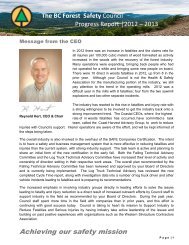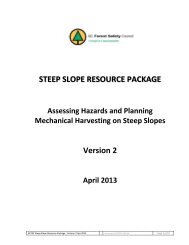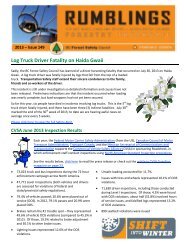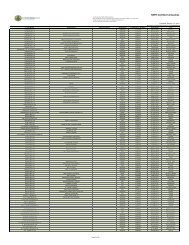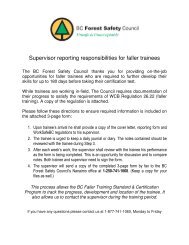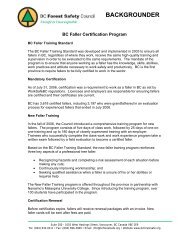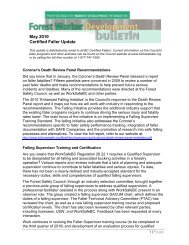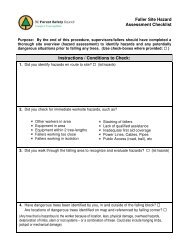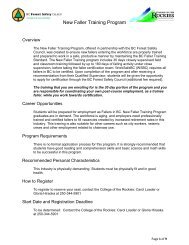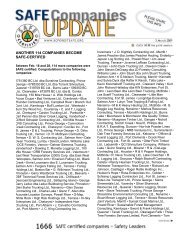Log Hauling & Lowbedding Safe Driving Practices And Operating ...
Log Hauling & Lowbedding Safe Driving Practices And Operating ...
Log Hauling & Lowbedding Safe Driving Practices And Operating ...
Create successful ePaper yourself
Turn your PDF publications into a flip-book with our unique Google optimized e-Paper software.
(Revised October 2006)<br />
LOADING SPECIFICATIONS FOR LOG HAULING<br />
The truck driver will ensure that his truck is loaded in compliance with Canfor’s <strong>Log</strong> Sorting<br />
and Loading Specifications and in compliance with W.C.B. Regulations. Drivers are<br />
accountable for their loads and must take adequate caution and care in loading, securing<br />
and transporting logs to ensure no logs fall from the trailer.<br />
No mixed lengths and / or species are to be loaded within one trailer bunk.<br />
No mixed sorts in a B-train or tridem trailer are permitted, (unless approved by a Canfor<br />
Forestry Supervisor for clean up). Clean-up mixed loads require one load slip for each sort<br />
on the trailer.<br />
The loader operator and the trucker will ensure that Company load slips are completed<br />
correctly prior to leaving the loading area. Failure to do so may result in no payment for the<br />
load.<br />
All loads must be secured to prevent any movement of the load. <strong>Log</strong>s must not exceed 3<br />
m from the rear of the trailer.<br />
<strong>Log</strong>s must be suitably crowned to allow straps or cables to contact as many logs as<br />
possible. At the bunk stakes, no logs should be more than one half their height above the<br />
stake, and the center logs should taper upwards to a smooth rounded crown. All logs must<br />
be in a secure lay, with no danger of falling from the load during installation or removal of<br />
wrappers. Refer to the photographs in this booklet or at the Canfor weigh scales for<br />
examples of acceptable crowning of loads.<br />
Loads arriving at the Canfor weigh scales judged to be unacceptably over-height, will be<br />
parked and a Canfor supervisor will be notified.<br />
All loads must be secured by wrappers and / or cables and cinches in accordance with the<br />
WCB Industrial Health & <strong>Safe</strong>ty Regulations and the Motor Vehicle Act Regulations.<br />
Special Requirements for 2.7 m Aspen OSB <strong>Log</strong>s<br />
Aspen logs have the most risk of falling from the trailer. The smooth bark and frost on the<br />
bark in winter conditions can cause loads on the last bunk to become unstable, and logs to<br />
fall out.<br />
Loader operators should alternate butts and tops on the bunks to distribute the butt flares<br />
and small logs as much as possible. Also, they should remove voids near and at the top of<br />
the load as much as possible to ensure all logs contact stakes, wrappers and other logs.<br />
No logs with excessive crook, sweep or deformity should be loaded on the rear most bunk<br />
of the trailer.<br />
Drivers are now required to install a third wrapper or steel cable and cinch around<br />
the middle of the last bunk of 2.7 m aspen OSB logs on each trailer.<br />
15



